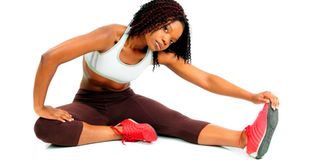Sleep like a baby: Breathing exercises for relaxation and sleep

Whether you are looking for a way to relax or sleep better, breathing exercises are available for just about any situation.
What you need to know:
- Buteyko Breathing might help with snoring and other respiratory issues that often cause sleeplessness, while Diaphragmatic Breathing helps complete oxygen exchange, lowering blood pressure and heart rate.
- Alternate nostril breathing balances energy levels by focusing on both sides of the brain.
Breathing is something that many people do every day without much thought. Breathing is how you get air into your lungs to provide oxygen for the rest of your body. Whether you are looking for a way to relax or sleep better, breathing exercises are available for just about any situation.
Breathing techniques for relaxation and good sleep
4-7-8 breathing exercise
Breathe in through your nose for four seconds. Next, hold your breath for seven seconds. Finally, exhale through your mouth for eight seconds. Repeat this exercise over and over again until you feel relaxed. This exercise is great if you have insomnia because it helps calm the mind and get rid of distracting thoughts.
Buteyko breathing exercise
Buteyko breathing is another excellent exercise that can help you to fall asleep faster. The idea is that by controlling your breathing rate and volume, you can calm down stress levels in your body, leaving you feeling relaxed before bedtime. Buteyko has many benefits, including easier breathing, reduced snoring, and lower blood pressure.
Before you go to sleep, sit in a comfortable position with your mouth closed and breathe through the nose. Breathe in for two seconds, exhale for two seconds. Pinch your nose, hold your breath for two to four seconds, then release. Continue with the cycle for a few minutes.
This technique helps you stay focused on what you want most: More oxygen reaching brain cells to work best the following day.
Abdominal breathing exercise
Many people have health issues that can make it difficult to breathe naturally, leading to sleep apnea. One solution is called abdominal or diaphragmatic breathing, where you focus on taking deep breaths at all times. By breathing this way, your body will naturally work towards a healthier state, and you'll find it easier to relax.
Diaphragmatic breathing helps complete oxygen exchange. Incoming oxygen is exchanged for outgoing carbon dioxide. This kind of breathing reduces the heart rate and can lower or even maintain blood pressure.
Lie down on a flat surface with bent knees. It is vital to protect your neck through this process. Place one hand on the chest and the other on the stomach around the navel area. Take deep breaths through the nose and exhale through the mouth.
You should notice your abdomen rising as you inhale and falling as you exhale. For beginners, start with inhaling for two seconds, exhaling for two seconds, and pausing for one second. As you continue, try three seconds each. You can also do diaphragmatic breathing while seated on a chair.
Alternate Nostril Breathing
Alternate nostril breathing is a technique that requires you to breathe in through one nostril at a time by closing off the other. This helps balance your energy levels and keeps both sides of the brain functioning properly. In addition, the breathing exercise is good for calming anxiety, which is a significant cause of insomnia.
To practice, sit on a comfortable surface, for example, a yoga mat. Cross your legs—breath in and out normally. After exhaling, cover your right nostril with one hand while the other hand is placed on the knee.
So now, inhale through the left nostril, pause, seal the left nostril, and exhale through the right nostril. Next, inhale through the right nostril, seal, and exhale through the left nostril.
Keep alternating-inhale, seal, switch and exhale. Do this for 5 minutes, effective before bedtime, to clear your mind for better sleep.
Tips to note when doing breathing exercises
- Stay in an upright position when practicing breathing exercises. You can also lie down and use a pillow to support your head and neck at a comfortable angle.
- The room should be quiet and free from distractions such as noise or light, which could cause stress during the exercise.
- The exercises will be practical when incorporated with good sleep hygiene.
- Start by practicing the exercises for only one minute. Gradually increase your time to five minutes. If you feel lightheaded at any point during this process resume normal breathing.
- After completing these breathing exercises, avoid engaging in strenuous exercise or mental tasks that could be counterproductive to relaxation.
- Note which breathing exercises work for you and stick with them.




